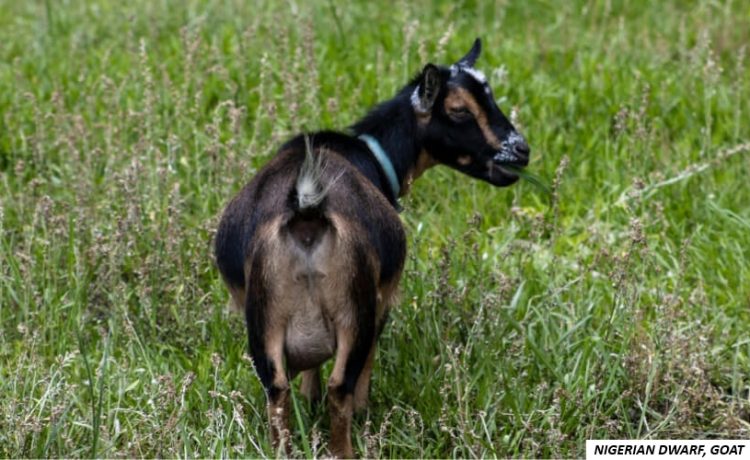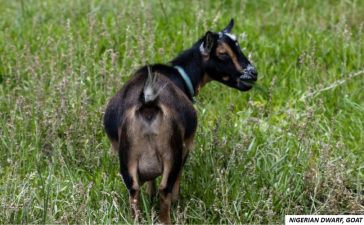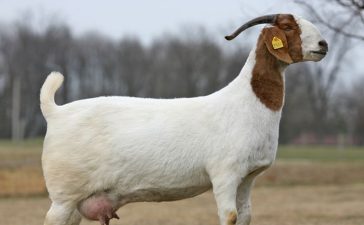Natural Strategies to Stimulate Estrus (Heat) in Goats
Back to Nature: Proven Ways to Bring a Goat (Doe) Into Heat Naturally.
Key Topics: - Importance of health, body condition, and nutrition - Role of daylight and photoperiod (seasonal breeders) - Flushing technique (nutritional boost before breeding) - Introducing the buck effect (pheromone stimulation) - Social and environmental triggers - Managing stress and housing conditions
Introduction:
Now that you understand how the estrous cycle works in female goats from the Part 1 of this article, it is time to roll up your sleeves and look at what you can do to bring your doe into heat – the natural way.
Not every goat keeper wants to rely on hormone injections or pharmaceutical interventions. In fact, most small-scale farmers and homesteaders prefer holistic, low-cost, and natural methods for stimulating estrus. The good news? Nature already has built-in tools for this – only if you know how to use them.
In this post, we will cover six core natural strategies for bringing does into heat, along with tips, timelines, and techniques to help you get the timing just right.
1. Nutrition and Body Condition: The Heat Trigger
One of the most influential natural triggers of estrus is nutrition. A doe that is underweight, malnourished, or lacking in key nutrients is far less likely to cycle – let alone conceive.
Optimal Body Condition Score (BCS)
Goats should have a BCS of 2.5 to 3.5 on a 5-point scale before breeding. Too thin or too fat, and her body will resist reproductive activity.
Flushing: A Nutritional Boost Before Breeding
“Flushing” is the practice of increasing a doe’s caloric intake 2–3 weeks before breeding to enhance ovulation and conception.
How to Flush:
- Add energy-rich grains like oats, barley, or corn to the diet
- Provide high-quality hay or alfalfa
- Supplement with molasses or beet pulp for extra energy
- Ensure access to clean water and trace minerals
Timing: Start flushing 14–21 days before planned breeding and continue for 1 week after.
2. Photoperiod Manipulation: Controlling Light Exposure
Goats are seasonally polyestrous, which means they naturally go into heat as daylight decreases. If you are managing goats in a stable or barn, manipulating light exposure can shift or extend their breeding season.
The Science:
The pineal gland reacts to changes in daylight length by adjusting melatonin production – which in turn affects reproductive hormone activity.
Natural Simulation:
- Allow does to experience shortening daylight hours naturally in late summer and fall
- Alternatively, reduce artificial lighting to mimic autumn conditions (12–13 hours/day)
Practical Tip: Goats living outdoors with natural sunlight generally adapt well without artificial light control. However, for dairy operations or staggered kidding plans, indoor light manipulation can help.
3. The Buck Effect: Nature’s Pheromonal Power
If you have ever introduced a buck near a group of does, you may have noticed an instant stir. This is no accident – it is biology in action.
What is the Buck Effect?
The scent and presence of a mature buck can trigger estrus in does that are not cycling or are in silent heat. His pheromones stimulate the hypothalamus and jumpstart the reproductive axis in the doe’s brain.
How to Use It:
- House bucks out of sight and smell for 30–60 days
- Reintroduce bucks within scent range (no physical contact yet)
- Within 48–72 hours, does will often show signs of heat.
Best Practice: Use a “teaser buck” (vasectomized or intact male) to safely trigger cycling before introducing your primary breeder.
4. Social and Environmental Triggers
Does don’t live in isolation. Their environment and social interactions influence hormone levels – often in subtle but powerful ways.
Group Dynamics:
- Does are more likely to cycle if housed in groups
- Sexual behavior spreads socially (called “social estrus”)
- Mounting, tail flagging, and vocalization increase when does witness it in others
Tip: Introduce one already-cycling doe into a group to stimulate heat in the rest.
Environmental Comfort:
Stress suppresses hormones like GnRH and LH, both of which are crucial for ovulation. Create a calm, safe, and low-stress environment.
- Avoid overcrowding and bullying
- Maintain consistent feeding and watering times
- Provide shade, dry bedding, and clean pens
5. Regular Handling and Observation
Believe it or not, your presence as a goat keeper plays a role in heat detection and stimulation.
Benefits of Routine Handling:
- Helps you spot subtle behavioral or physical changes
- Desensitizes does to stress, improving hormonal balance
- Encourages blood flow and metabolic engagement
Tip: Handle goats gently during feeding and grooming. Watch for changes in:
- Tail wagging (flagging)
- Restlessness
- Mucus discharge
- Interaction with other does
Introducing Natural Breeding Cues
Rather than relying on artificial insemination, allowing a buck to breed naturally with your does can improve both conception rates and cycling patterns.
Controlled Natural Mating:
- Place a fertile buck with does during anticipated heat periods
- Monitor for successful mounts and standing heat
- Record behavior and mark mated does with chalk or colored harnesses
Note: One buck can handle 10–20 does during a 3–4 week breeding season, depending on his age and libido.
Case Example: Bringing a Doe into Heat Naturally
Doe: Nigerian Dwarf, 2 years old, not cycling since spring
Environment: Pasture-kept, hay-based diet, no exposure to bucks for 3 months.

Action Plan:
- Begin flushing diet with added oats and alfalfa (2 weeks pre-breeding)
- Remove all visual/scent contact with bucks for 45 days
- Create a calm, clean pen with 2 companion does to support group behavior
- Reduce nighttime lighting in barn to <13 hours/day
- Reintroduce teaser buck on Day 14 post-flushing
- Watch for signs of heat: mucus, vocalization, tail flagging.
Result: Doe showed heat within 48 hours of buck exposure and successfully bred naturally.
Common Natural Mistakes to Avoid
| Mistake | Fix |
|---|---|
| Poor body condition before breeding | Use flushing to build nutritional reserves |
| Constant exposure to bucks | Use the buck effect strategically with isolation periods |
| Ignoring social hierarchy | Monitor bullying; use calm does to promote herd-wide cycling |
| Rushing into AI or hormone use | Give natural methods time (3–6 weeks of prep before intervention) |
| Overcrowding or dirty pens | Clean, low-stress housing boosts hormonal balance |
CONCLUSION: Patience + Preparation = Natural Success
Bringing a female goat into heat naturally is not just possible – it is often preferable. You are working with her biology, not against it.
Using tools like nutrition, daylight management, pheromonal stimulation, and social triggers, you can encourage healthy, sustainable cycles in your does – often without needing synthetic hormones or costly vet bills.
In Part 3, we will dive into the nutritional and herbal supplements that can help encourage estrus and support long-term reproductive health in your herd. Get ready to learn about mineral blocks, apple cider vinegar, fenugreek, and other natural aids that goat keepers swear by.



